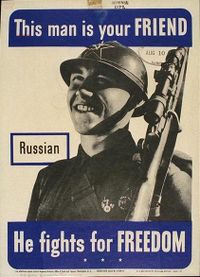 The Conservatives and their Blogging Tories echo chamber claim that Jack Layton and the NDP want to negotiate with the Taliban. Wrong.
The Conservatives and their Blogging Tories echo chamber claim that Jack Layton and the NDP want to negotiate with the Taliban. Wrong.
Unfortunately for Mr. Harper it is his NATO allies who want to negotiate with the Taliban. Now who is being unrealistic.
I expect an immediate telegram from the PMO to Tony Blair to tell him to end this politics of appeasement and rapproachment.
Failing that perhaps Jack has a point, eh.
British Minister hails Pak-Taliban deal in WaziristanThe peace deal between the Pakistan government and pro-Taliban militants to end the five years of unrest in the tribal area bordering Afghanistan is a "great step forward" and could be a "future model" for insurgency-ridden Kabul, a British Minister has said. Visiting British Deputy Foreign Minister Kim Howells told reporters during his visit to Peshawar yesterday that the accord was a "great step forward" and would be closely watched by the Afghans, who might also attempt a similar sort of deal to quell the violence in their country. Taliban resurgence, Pak’s Waziristan pact cause deep concern.Indian Express, India - 12 hours agoNEW DELHI, SEPTEMBER 10: There is no doubt in India that Taliban will get bolder and try to execute more ambitious plans in the South. And while this is imminent, grounds are being prepared in Pakistan’s Waziristan area from where troops would be withdrawn under the agreement worked out by Pakistan President Pervez Musharraf.
Though Musharraf claims that the Durand Line will remain sacrosanct, there are not many takers for the promise in India. Unlike the Taliban dominated South and South-East Afghanistan, sources say, this area is shared with Al-Qaeda cadres.
Deal with militants a license to promote Talibanisation: PPP
It is alarming that the Taliban, which had been routed after the fall of Kabul, have regrouped and gained in strength virtually enforcing their writ in the tribal areas, carrying out punishments, policing the area and now forcing a peace treaty through which their confiscated arms and vehicles are to be returned to them, the spokesman said. Almost all the Taliban demands were met by the deal including the release of their men, return of their weapons and vehicles, dismantling of the army checkposts in the area, and monetary compensation for those killed or injured during military operations, the spokesman claimed.
Pakistan
Afghanistan

Find blog posts, photos, events and more off-site about:
Canada, Nukes, Pakistan, Taliban, Balochistan, Harper, Bush, Afghanistan, nuclear, nuclearfuel
NDP, liberals, Afghanistan, PB, BT, Canada, Progressivebloggers, bloggingtories, blogs, blogging, bringthetroopshome, Layton,NDP, Layton, TroopsOut, Afghanistan, War, Harper, Conservatives, Liberals, Canada, politics, military, NATO, peacekeeping, Karzai, NDP, liberals, Afghanistan, PB, BT, Canada, Progressivebloggers, bloggingtories, blogs, blogging, bringthetroopshome, Layton,NDP, Layton, TroopsOut, Afghanistan, War, Harper, Conservatives, Liberals, Canada, politics, military, NATO, peacekeeping, Karzai, Graham, Liberals, Canada, Soldiers, Death, Injury, Afghanistan, Government, Politics, values, Men, mysogyny, women, Afghanistan, Canada, Harper, war, Taliban, Kabul, Karzai, Islam, fatewha, girls, school
Tags
Canada
USA
War
Friendly Fire
Canadian Troops
Afghanistan
Kandahar
NATO





